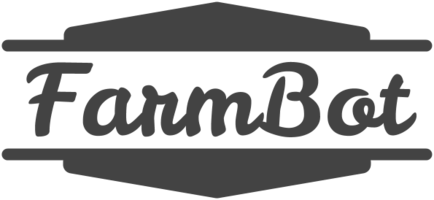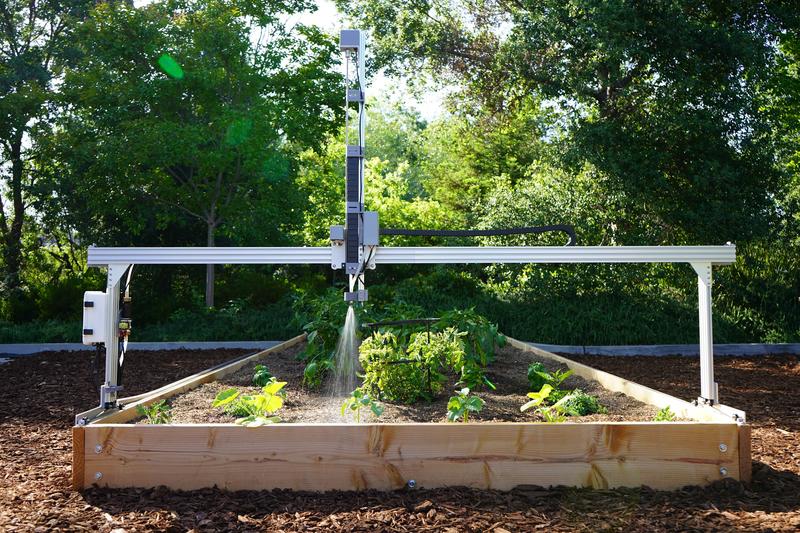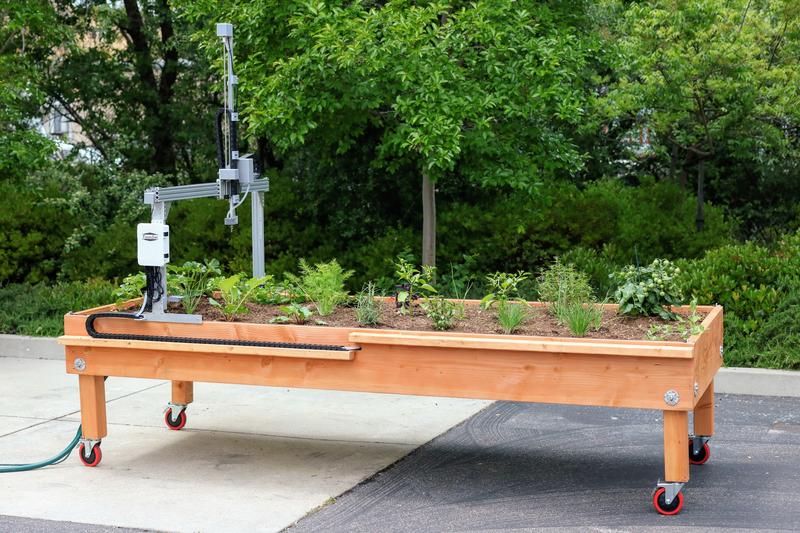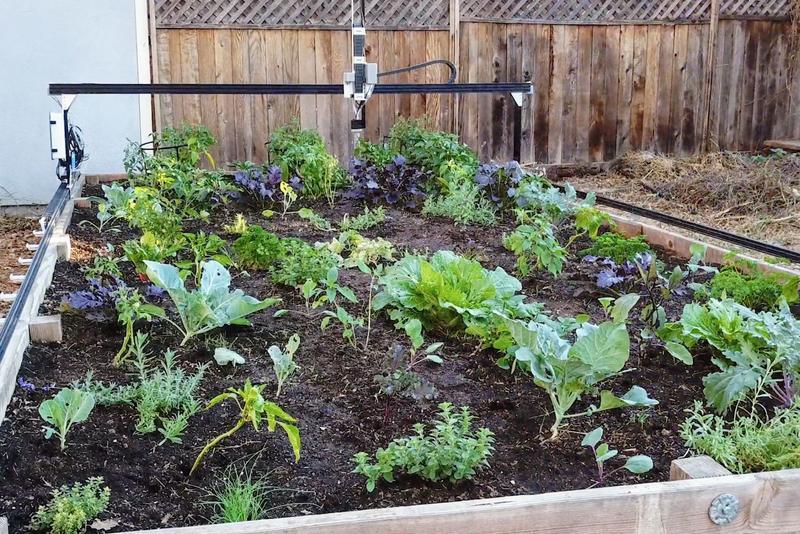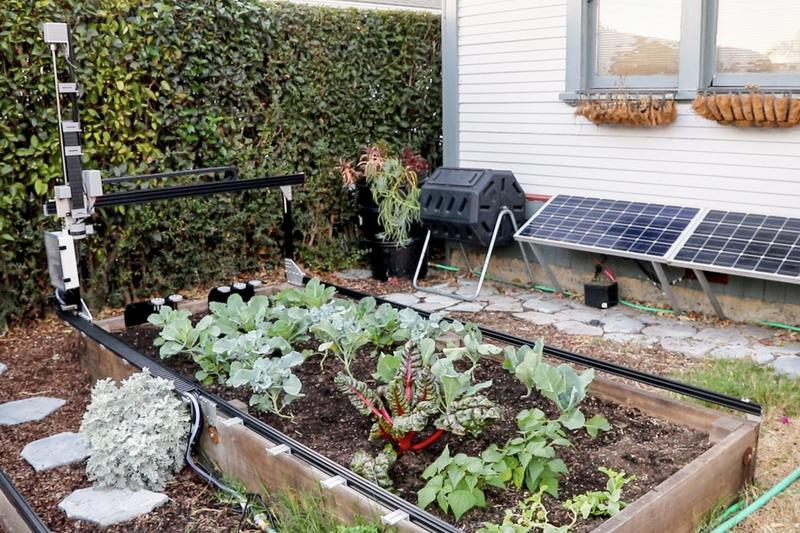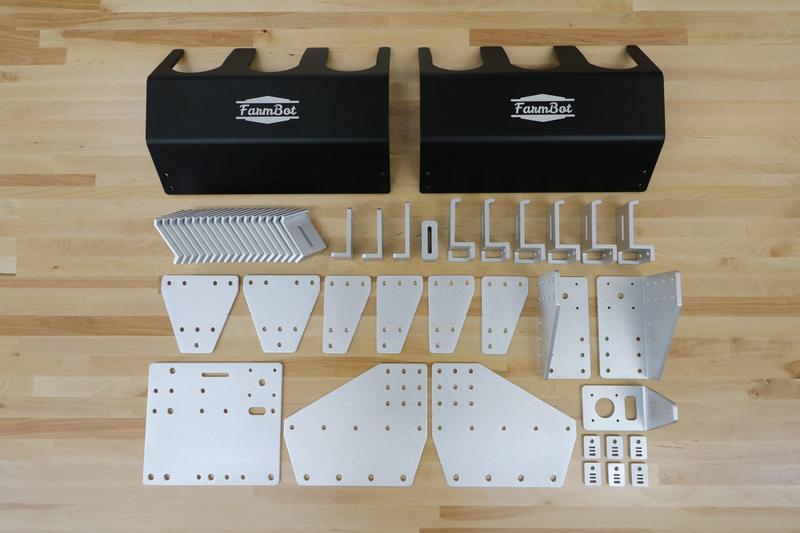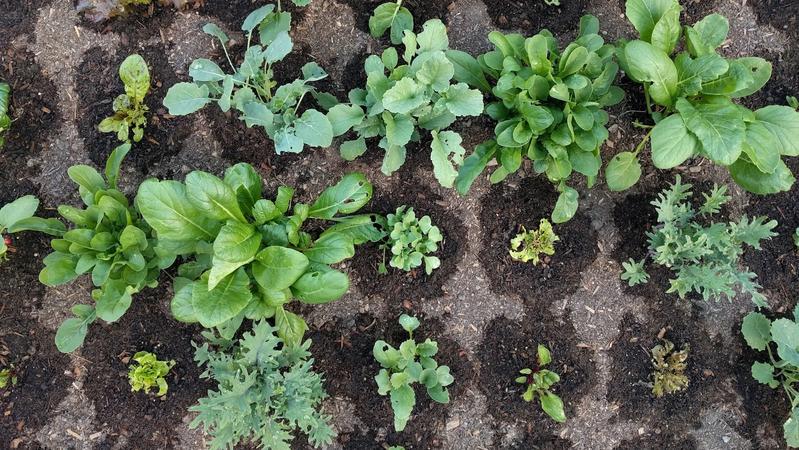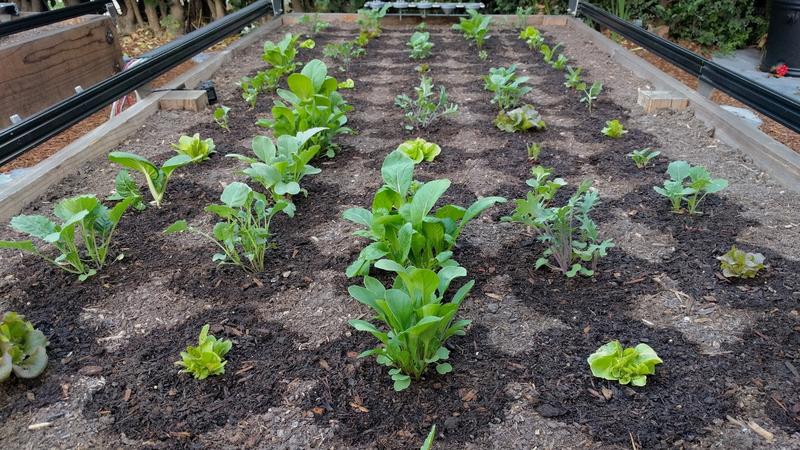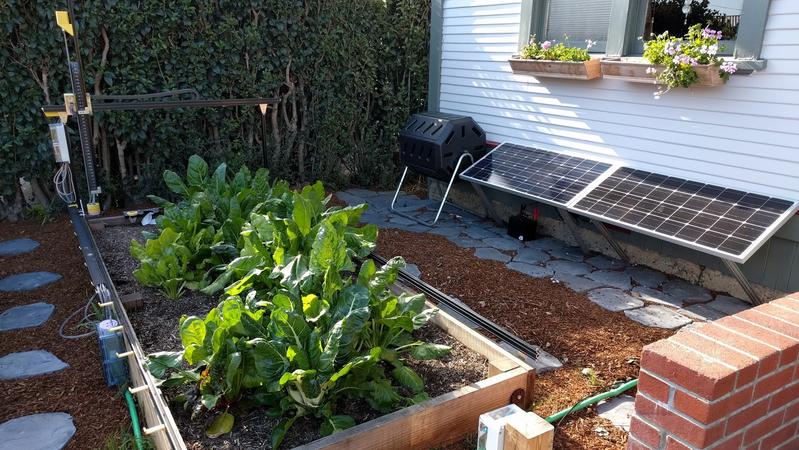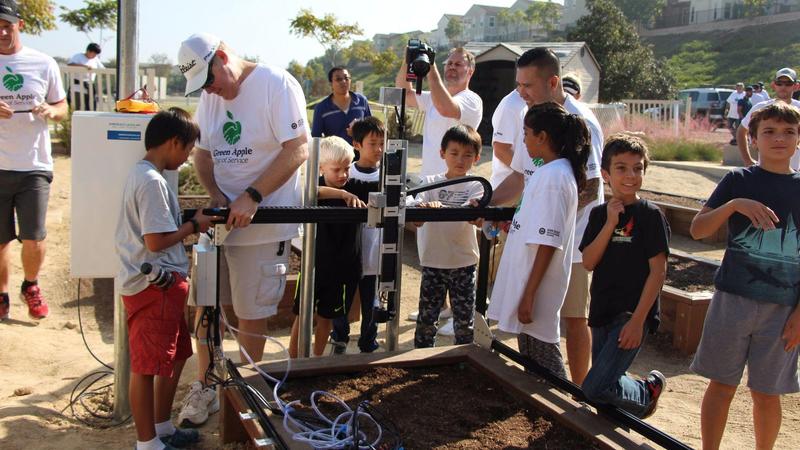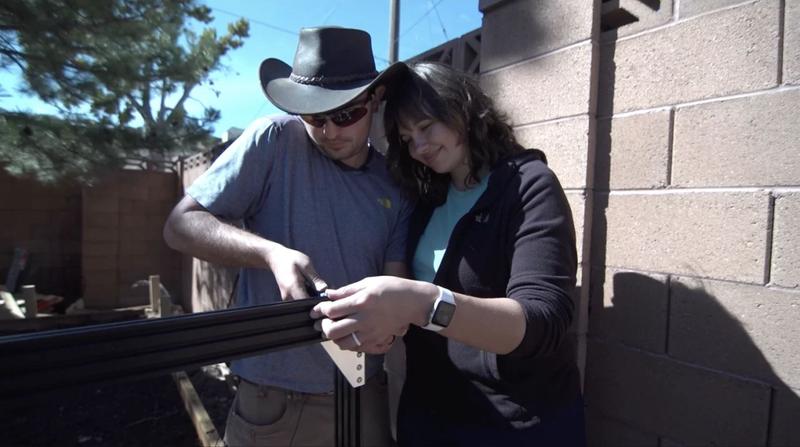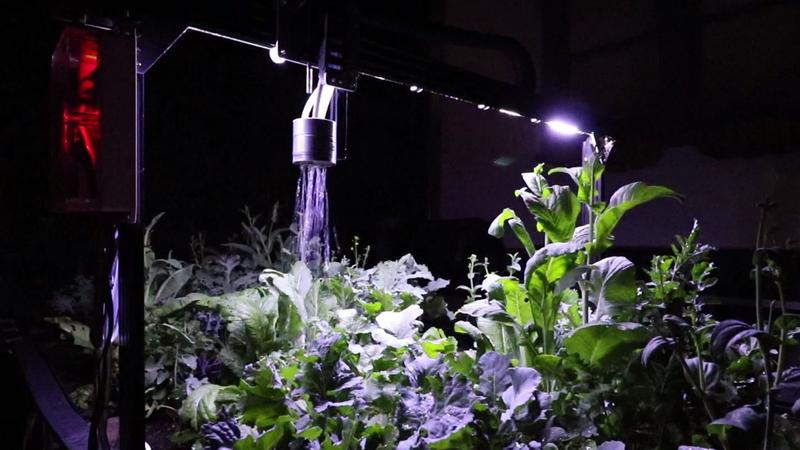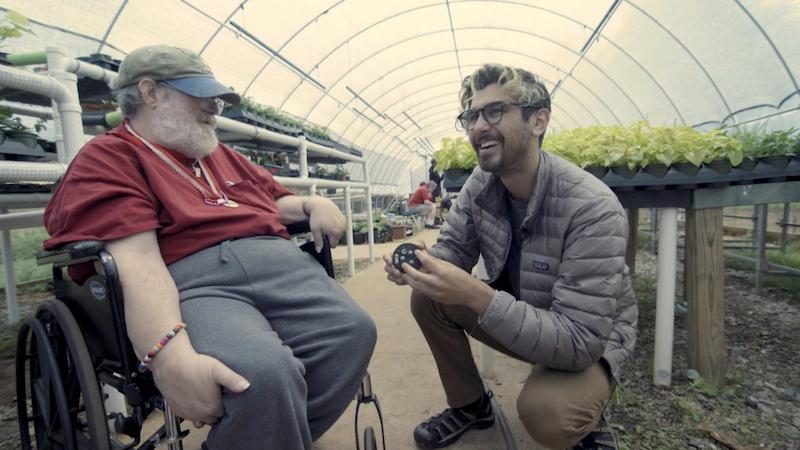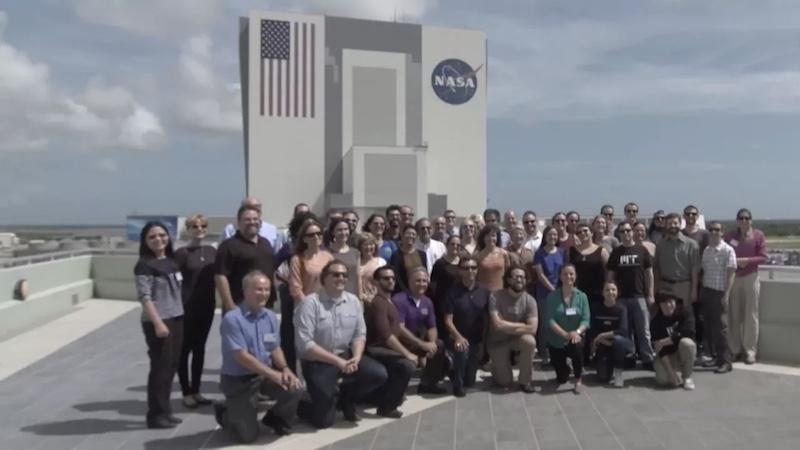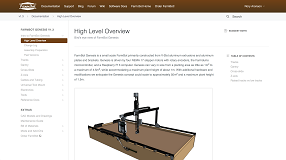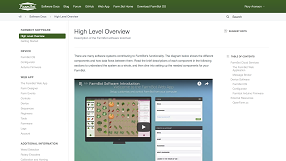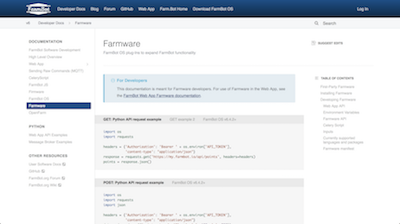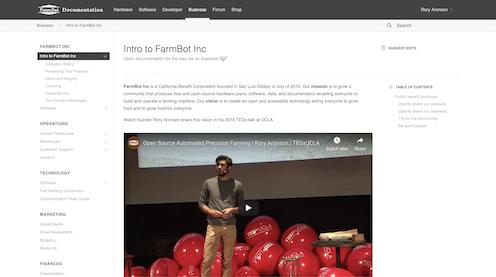This post was originally written on
the OpenFarm Blog.
In this post I'm going review the entire process of creating and running the successful
OpenFarm Kickstarter campaign. I'll cover what worked, what didn't, and what we would do different if we could do it all over again. I hope this helps inspire others to run their own campaigns, and inform them of what they should be thinking about and doing throughout the process.
Intentions and Metrics of Success
A common misconception is that crowdfunding is exclusively about the money - that the total pledge amount on your campaign page is the only thing that matters. Though the money is obviously a very important
metric of success, it is not the only one. There are many other factors that can make you and your idea succeed.
In order to define our metrics of success, we first
set out our intentions for creating the crowdfunding campaign.
What is the purpose of creating the campaign? What do we want to achieve? With the OpenFarm campaign, these were our intentions:
-
Raise Funds - Our goal was to raise $7,500 in 30 days to pay for two things: website hosting fees and professional software development time
-
Build Brand Awareness - OpenFarm is a community based project built on crowdsourced information. Without awareness of the platform and brand, we would not have any users nor data to share with others. Therefore, raising awareness and building a following was an important intention.
-
Attract Volunteers - As a volunteer created project, we wanted to attract more volunteers to actually write OpenFarm's code.
-
Gain Validation and Feedback - Who wants to build something that nobody wants to use? By running a crowdfunding campaign, we were testing our idea with a wide swath of potential users. This is an excellent way to validate our ideas. Going hand in hand with validation is feedback. Aspects of our idea that would not have served our users have been reported to us as such. Additionally, we have had a flood of new ideas come in that we had never considered before.
By setting out these intentions, it was easy to define our metrics of success:
-
Raise Funds
- The total pledge amount on our campaign
-
Build Brand Awareness
- The number and quality of social shares and interactions
- The number of articles written about the project and their number and quality of readers
-
Attract Volunteers
- Number of contributors and the quality and amount of their contributions on our code repository
- Number and quality of other contributors (design, UX, data, etc) contacted through email
- Number of "watchers" on our code repository
-
Gain Validation and Feedback
- General sentiment of the project
- Number and quality of feedback and new idea messages
With clear intentions and metrics of success defined, it was time to move forward in creating the campaign, starting with our communication strategy.
Communicate Your Idea
How we
communicate our idea is the foundation for our campaign.
This is absolutely the most important step we took before proceeding with anything else. Having consistent, simple, descriptive, and memorable ways of describing OpenFarm increased engagement, reduced the time and text required to share our idea, and streamlined all of our other communication efforts (video scripting, press releases, interviews, etc).
Below is how we, in general, communicated the idea of OpenFarm in various formats. Start thinking about these things now. Ask your friends for help and feedback. Write all your ideas down. Take breaks. Keep questioning what you come up with. Remember:
Simple is always better.
-
In 1 Paragraph - OpenFarm is a free and open database for farming and gardening knowledge that anyone can contribute to. Think of it as the "Wikipedia for Growing Plants." The main content on OpenFarm is Growing Guides - instructional pages describing how to grow a plant based on specific environmental conditions and growing practices. Because everyone grows things differently, an unlimited number of Guides can be created for each plant, allowing learners to find the best, most relevant advice.
-
In 1 Sentence - OpenFarm is the "Wikipedia for Growing Plants", allowing anyone to share their expertise and learn something new.
-
In a Tagline - Primary: OpenFarm: Learn to Grow Anything. Secondary: OpenFarm: The Wikipedia for Farming and Gardening
-
As a Hashtag - #OpenFarm
Some notes about your Hashtag:
- The absolute best thing you can use for your hashtag is your brand name. This is the easiest hashtag for others to remember to use and the easiest way for a reader looking at a post to go find your website and campaign through a search. Your brand as a hashtag also functions as a tool for you to gauge sentiment of your idea, see how many shares are happening, and where people are reading about your project.
- If your brand does not work as a hashtag, think about it again. Are you sure it doesn't? Damn. Ok, then use something else that is short and sweet, simple and descriptive. Avoid the desire to use a really long hashtag. They are annoying, harder to read, less shareable, and take up valuable message space. Most people will make up long hashtags anyways to describe their take on your idea. This is great, but all of these random tags will not be linked in any way to your project and will dilute your brand and message. They are fine coming from other folks, not from you.
- Using your tagline as a hashtag is a good option both as a backup if you can't use your brand or in addition to it. For example: #OpenFarm is the #WikipediaForGardening.
- Avoid using multiple hashtags at the end of posts such as: #OpenFarm is the #WikipediaForGardening. #Farming #Farmers #Gardening #Gardeners #Plants #OpenSource #GrowFood #Kickstarter. Let others do that. You should focus on your brand.
Write the Campaign Description
Once the foundation of communication was defined, we started writing the campaign description. Here is the process we went through:
-
Draft a Project Description - Just write everything you can think of at first. It might be good to start with an outline too.
-
Include all the Details - You are the expert of your project and it will be easy to gloss over details because they are so obvious to you. Have friends who are already acquainted with the project (but not an expert) read through your draft to help you make sure all of the right information is included.
-
Simplify - Now cut out all the fluff. Then cut out more. Rewrite sentences to be more concise and written in plain language. Boil your description down to convey the essence of your project. Make sure you maintain continuity. Remove as much jargon as you can. If you absolutely can't remove it, make sure you define the word ahead of time. Have your friends help you. Keep simplifying. Question every paragraph, every sentence, and every word. If it is not adding value, cut it out. Keep in mind who is going to be reading this -everyone: academics, kids, those with English as a second language, those without great vocabularies, those who are rushed and distracted, those who skim rad, news reporters and bloggers, your friends and family, and ultimately: people that you are trying to convince that your project is worth backing.
-
Proofread - Use a spell checker. Ensure you are using punctuation correctly. Be consistent with your styles (bullets, italics, bolding).
Create the Campaign Video
When shooting the OpenFarm video, we wanted to include several things:
-
Context - We started our video off in our garden. This showed that we are gardeners and therefore relate-able to the prospective backers, and also showed a use case of who might be wanting to use OpenFarm.
-
The Problem - We wanted to illustrate the need for OpenFarm and explain why it will be better than what currently exists. We did this quickly, not wanting to dwell for too long on the problem, but rather get straight to the solution.
-
The Solution - We spent most of our video's time on explaining the OpenFarm solution using screencasts to show what we want to build. Seeing something tangible gets people excited, but make sure that you do not fool people into thinking you have something that you don't! We made sure to put overlays on our screencasts to explicitly say that they are only design mockups.
-
Short and Sweet - Don't make your video too long! Be to the point, include the most relevant information, and make sure to ask for help. That is why you are on Kickstarter after all, so don't miss your chance to personally ask your audience for it!
-
Production Matters - Good videography and editing goes a long way in increasing legitimacy and "selling" your idea, but you don't need to go over the top. Spend the time to do a great job, but don't worry if it isn't perfect. In a few of the clips where I talk directly to the camera, you can hear a jackhammer in the background. I edited the audio levels to help reduce the noise, but I didn't go out of my way to re-record the clip.
Choosing and Pricing Rewards
Almost everyone I know who has run a crowdfunding campaign has given me the same advice:
Account for the cost of fulfilling rewards and the time it will take for you to fulfill them. Then add on extra for security! This piece of advice is what steered us to
offer rewards at prices that allowed us to focus on our project. Of course, in some cases the rewards
are the project, in which case a different reward model is needed. But for us, we wanted to end our campaign, fulfill rewards quickly at a low cost, and then get on with actually building OpenFarm and have a good amount of money to do it with. Our rewards:
-
$5 Digital Badge - Easy and free to do. All we need to do is import all the emails into our badge system. Why did we choose $5 instead of $1 as our lowest pledge amount? Because 90% of people who can afford the time and money to give us $1, can give us $5. This small difference ended up making us an extra $4,304 because we had so many backers at this level, 1,076 to be exact.
-
$25 Sticker - Fairly easy and very low cost to do. Stickers and postage will be around $1, bringing in a high ratio of pledge money to the actual project. The biggest cost here will be the time, but exporting all the postal addresses and printing out labels will significantly streamline the process.
-
$35 Thank You Note - Still easy and low cost to do. Again the biggest cost will be the time, but estimating about 5 minutes to write each note, the extra $10 will bring in a lot for the project.
-
$100 Tee Shirts - Most projects price their shirts near $25. After buying the custom printed shirts and shipping them, this might only leave $5 or $10 for the project - a low return. That is why our shirt was priced so high.
- $1,000 and $2,500 for links and logos in the footer did not have any backers, though it is always important to put up a reward for a lot of money because you never know who is out there!
- Overall, we did not have very many reward levels and each one was very easy and low cost to fulfill in comparison to the amount we would be taking home for the project. It is easy to add in rewards at a bunch of different levels but ultimately simplicity is the best road to go down. You will spend less time worrying about pricing, less time buying and making a bunch of different things, less time sending out surveys, less time making sure everything goes to the right person, backers will more quickly and easily choose a pledge, and you will be able to focus most on the project.
Supplementary Setup
-
Build or Prep Your Website and Blog - You must have a website and blog for your project. It doesn't have to be fancy, but it must be yours. If you want something simple, look into Tumblr or Blogger. If you want to get more advanced and customized, setup a Wordpress site. Your website should include a blog to share updates with, your Kickstarter campaign's widget, your contact info, downloadable press releases and media kits, and of course: the normal info you would include about your project.
-
Create Social Media Profiles - Setup a Facebook Page and Twitter handle for your project. Add high quality profile pictures, descriptions, and cover photos, as well as a couple posts about what is happening so that it doesn't look like a desert. Make sure to invite your friends to like your page and follow a bunch of relevant people on Twitter. A Google+ Page may be useful if your project is geekier or more technical. An Instagram will be great if you are going to have a lot of good photos to share throughout and after your campaign.
-
Setup an Email Newsletter - You will be sending out email updates via Kickstarter during and after your campaign, but there are going to be a lot of people who do not back your project but want to stay in the loop, especially after the campaign. Use Mailchimp or another service to setup an email newsletter. Make sure to embed the signup form on your website and make it easily accessible. At the end of your Kickstarter campaign, you will want to export the email addresses of your backers and import them into your newsletter service to have a unified communication channel.
Now that you are all setup, it is time to get ready to launch! The next two steps are things I did not do with OpenFarm but wished I would have had the time and knowledge to do so before hand. I am speaking now from speculation, not experience.
Choose a Launch Date and Time
With OpenFarm, we launched as soon as we were ready; basically as soon as the video uploaded. Do not do this. You want to get everything set up and choose a date to launch at least two weeks out in order to start doing groundwork with the press. You want to set a hard launch date and time so that the press can auto-publish an article right on time. Try to launch in the early morning (4am) so that folks waking up for the day and checking their social feeds and news blogs see your story first thing. They will then be bombarded by tons of other articles throughout the day.
Befriend the Press
The most effective way of getting the word out about your campaign is having established bloggers, news sites, and other projects write about and share your project on their website, social profiles, and email newsletters. These sites have large audiences who already like their curated content; they will be able to reach many more people than you ever could on your own. The key here is to do a lot of the press groundwork
weeks, even months ahead of launching your campaign. Yes, you read that right. We did not do this for OpenFarm and then ended up playing catch up with the press with several articles actually came out after our campaign had already ended! Here is the recipe for success:
- Make a spreadsheet for tracking your press connections
- Contact known writers or news tips email addresses and get your shoe in the door
- Do not just send them a press release. Rather, mention that you read their site, follow their project, etc, and you think your campaign is something they might be interested in featuring
- Make sure to include a press release, a media kit, your contact info, and most importantly: your campaign link and launch date
- Be persistent but not spammy. If you start this process months ahead of time, you have the chance to reach out to multiple writers from a source if the first one does not respond. You and the writer will also have adequate time for an interview and to write about the project.
- Make sure that their articles are scheduled to be published the day you launch
- Make sure that they post their own article on their social profiles, and ask about an email newsletter.
Take the time to find contacts and writers for sites with great audiences. The more suited the audience is to liking your idea, the more likely they will share the article, click your campaign link, and back you. Prioritize relationships with writers and look out for their interests. Their job is to cover great news like your campaign, but they don't want to be advertised at or spammed. Be cautious with your first connection email headlines and wording!
Launch
You're now ready to launch your campaign! Go for it and quickly move to the next step!
Tell the World
Facebook
Tell your friends on Facebook, ask them to share the post (not just like it). Post it from your project page too. If you are part of nay groups, post it there. You can try messaging other groups but if they are not following you, then your message will go into their 'other messages' section and they will likely not see it. Also, it is unlikely that many people will see your post if you post on the wall of other popular pages.
In general, Facebook is best for connecting with your friends and anyone who reads an article about their project will share it with their friends. It is not so great and connecting with people you don't know.
Reddit
Reddit is a tricky place. If you have no experience with Reddit, you might just want to shy away from it. The good:
- Reddit users hang out in subreddits that are very specialized such as r/Gardening or r/Homesteading. For this, each of these niche places is a goldmine of your exact demographic
- Reddit drives a lot of clicks if you get upvoted and get to the top of a poplar subreddit. I mean, a LOT of clicks.
- Reddit users will also likely comment and give both harsh feedback/skepticism, and great ideas and accolades
The bad:
- There is a high likelihood that you will be auto-moderated out if you post the same link in too many places
- You will not stand a chance if you create a new Reddit account and try to post
- You will likely be down voted because you seem to be advertising
With OpenFarm, we got an initial boost of traffic from Reddit. Then some posts didn't do so well and the auto-moderator stopped us from posting anymore. That pretty much ended our Reddit streak.
Twitter
Flood Twitter with retweets and favorites. Yep, anytime someone says anything good about your campaign, favorite and retweet it. If others come your Twitter page and see a lot of activity from a lot of people, it will be exciting. They may tweet themselves or find their favorite blog who tweeted about you and retweet them. Make sure to be looking at your brand hashtag and other tags that people may have used!
You can also use tools like
Buffer to schedule tweets. A lot of news sites do this and will send out a tweet about their article about you twice a day for the next two weeks. This is only worth doing if you had a lot of followers prior to your campaign, otherwise anyone who is following you has probably already seen your campaign and it is more important to share what others are saying about you and giving updates on your progress.
For the OpenFarm campaign, we followed and tweeted at a lot of people we thought would be interested. We found them by searching for 'Master Gardener'. Anyone self proclaiming that title would surely be interested in our project. Here is an example mass-tweet format that worked really well for us and got a lot of engagement. Things to note: it is more honest and factual and less pitchy. We're letting someone know about something that we genuinely think they will be interested in. This tweet is also very retweet-able in the sense that the wording could come from anyone and it does not feel like an advertisement.
@Master_Gardener A group of volunteers are building the "Wikipedia for Gardening" Thought you would be interested! http://t.co/BVfiCFV7qQ
— OpenFarm (@OpenFarmCC) August 21, 2014
Here is an example mass-tweet that did not work very well for us. It is too much of a pitch and we're asking too many things of the reader: follow the link
and retweet us. Too much to do for the average user and it feels too much like an advertisement.
Google+
Google+ has communities that function kind of like Reddit. You can join these communities and post about your project. Again, be non-spammy and try not to come off as an advertisement. Posting from your personal account might get you more engagement because you don't look like an ad, but rather a community member trying to share something interesting and valuable.
Be Responsive
Kickstarter will send you an email every time someone backs your project. This is fun for the first 50 backers and then just clogs your inbox. I setup a filter in Gmail to auto-archive the New Backer Alert emails so that I could focus on answering messages and comments.
Being responsive to the onslaught of emails, tweets, facebook messages, and Kickstarter comments and messages can be overwhelming when your project takes off. Take them one at a time and make sure to put thought into each response. Running a Kickstarter is no walk in the park - you will need to be answering messages constantly.
Prioritize interviews over anything else. If someone wants to write about your project, help them along as fast as you can. If you can have a half day or 1 hour turn around to responding to interviews, you'll get a lot of additional press during your campaign. Expect writers to take at least a week to get something published upon first contacting you.
Tracking The Campaign
Kickstarter uses the
Bit.ly URL shortening service that does two important things:
- Provides a nice short URL to share in emails and social media posts - important for digestible reading
- Tracks where users are coming from (referrals, geographic location) so that you can see where your efforts are most effective
To access the Bit.ly dashboard where you can see this information, you must put a '+' in front of the shortlink, like so:
kck.st/1yBHkVG+.

Kickstarter also has a really nice dashboard for tracking your campaign. They display: a graph of your funding progress, the average pledge amount, referral stats, video stats (plays and completions), and reward popularity. I found each of these areas insightful in their own ways:
- Our top referrers were:
- The Kickstarter Email Newsletter: Growing Things (43% of pledges)
- Direct traffic - no referral information (27% of pledges)
- Discovery on Kickstarter's site - search, "what's popular", "discover", etc (14% of pledges)
- The overall referral breakdown was:
- 58% from Kickstarter sources
- 42% from External sources
- The average pledge amount was $15.14
- The video was played 24,755 times and completed 38% of the time
- Our reward breakdown was:
- No reward - 155 backers (10%), $1,660 raised (7%)
- $5 Digital Badge - 1076 backers (67%), $6,194 raised (25%)
- $25 Sticker - 230 backers (14%), $5,910 raised (24%)
- $35 Handwritten Note - 62 backers (4%), $2,274 raised (9%)
- $100 T shirt - 82 backers (5%), $8,255 (34%)
- $1,000 Name and link in site footer - none
- $2,500 Logo in site footer - none
It's important to note that 5% of the backers raised over a third of the money. This reinforces how important it is to reach the
right people, not necessarily the most people. It is also interesting to see that for nearly every view of the video, we raised $1. So there is a bit of a numbers game in there about getting the most people possible to watch the video, assuming that if they click a link the are at least somewhat interested in the project.
Another important tool for tracking is
Google Alerts. With this, you can get instantly notified as soon as an article or blog post is written about your campaign! This way, you can quickly go and tweet about that article or share it on Facebook.
Share Updates
It is of course important to keep your backers in the loop with constant communication. Share updates on your progress, be honest and up front about any setbacks, and build your community. All of the people who backed your project believe in you and your idea. Ask them for feedback, advice, additional resources like connections or knowledge.
Fulfill Rewards
Be smart about fulfilling rewards, stick to your schedule, and try your best to get everything sent out on-time, This is where simplicity of your rewards structure will be key, either making this part of your campaign fun and easy or a nightmare!
So How Did We Do?
Looking back at our
metrics of success, we can evaluate how we did:
-
Raise Funds - We reached over 323% of our goal from 1,605 backers! Pretty good, huh?
-
Build Brand Awareness - Just 3 days after the end of the campaign, we now have over 1,400 users registered on the OpenFarm site, several hundred followers on our social media profiles, over 400 subscribed to our mailchimp email newletter and we'll import the 1,605 addresses from our campaign, and we'll eventually have a bunch of folks wearing shirts and displaying stickers! On top of this, there is a steady stream of folks still finding out about OpenFarm from the already written press, driving over 2,000 pageviews a day!
-
Attract Volunteers - This was perhaps the biggest win of our campaign. Since launching we tripled our development team and have had a surge of discussion and development activity on the repository. Currently we're at 14 contributors, 43 watchers, 159 stargazers, and 40 forks!
-
Gain Validation and Feedback - We had a ton of great feedback throughout the campaign. I received over 100 direct emails with ideas, questions, and suggestions, 40 comments on the campaign, and about 60 messages on Kickstarter. In general, the sentiment was very positive both on the campaign and in the social media world. We think the OpenFarm concept has been very well validated!
Overall, I'm very happy with the way our campaign turned out and our team is excited to move forward on our project. I hope this blog post will give you some insight and help you run a successful campaign, good luck!
